Update 08.29.2018 -- Run 9 pp: R = 0.2 unfolding, weird behavior in the eTtrg = 15 - 20 bin
If you were to look at the 'eTtrg = 15 - 20' GeV bin of the unfolded 'R = 0.2' data, you'd see a weird bump around 'pTreco = 3' GeV/c in both the pi0- and gamma-triggered distributions:
So I did a few tests to see what was causing this bump. First I compared the corrected 'R = 0.2', 'eTtrg = 15 - 20' GeV gamma-rich data using two different correction schemes: unfolding with the SVD algorithm, and a bin-by-bin correction. The response -- meaning both the response matrix and matching efficiency -- was created using 'R = 0.2' recoil jets triggered on a charged hadron with 'eTtrg = 15 - 20' GeV.
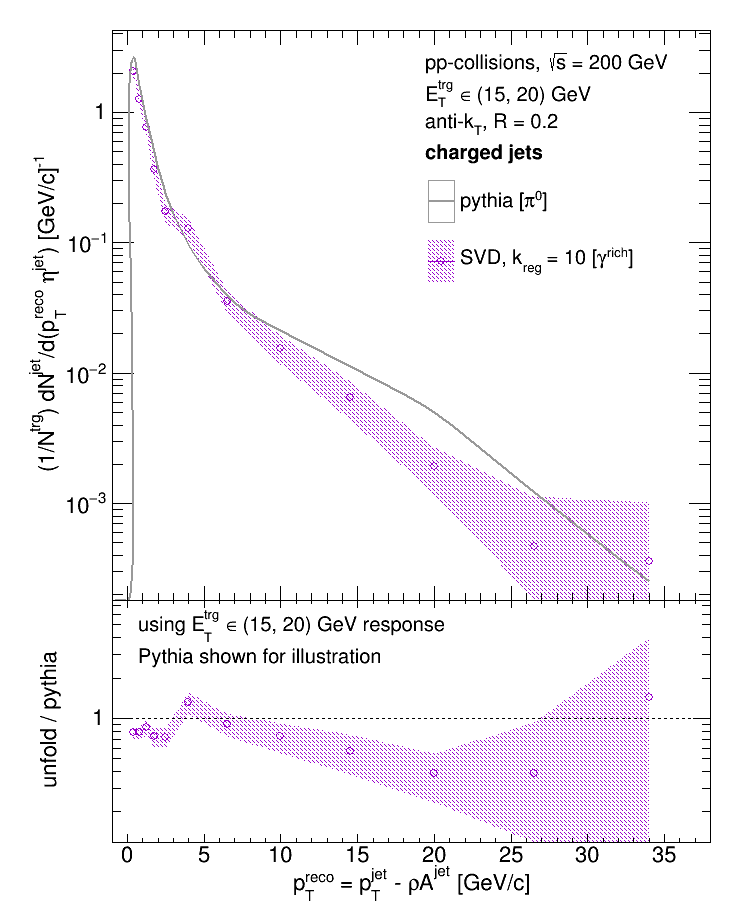
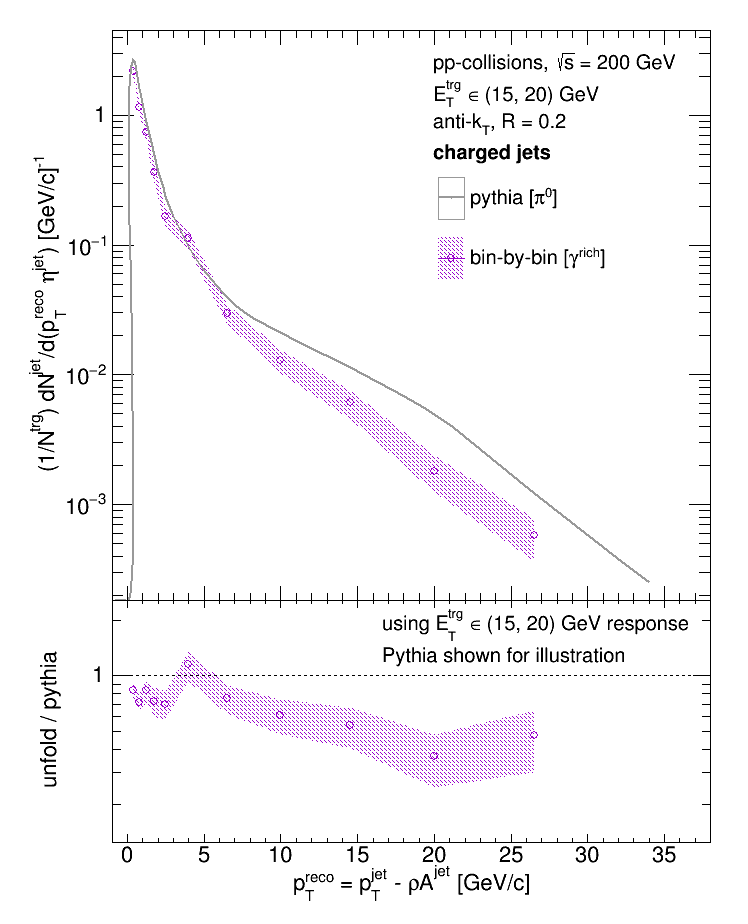
(The pi0-triggered Pythia distribution is there just to guide the eye.) Next, I tried the same 2 correction schemes but with a response created with 'R = 0.2' recoil jets triggered on a charged hadron with 'eTtrg = 9 - 20' GeV.
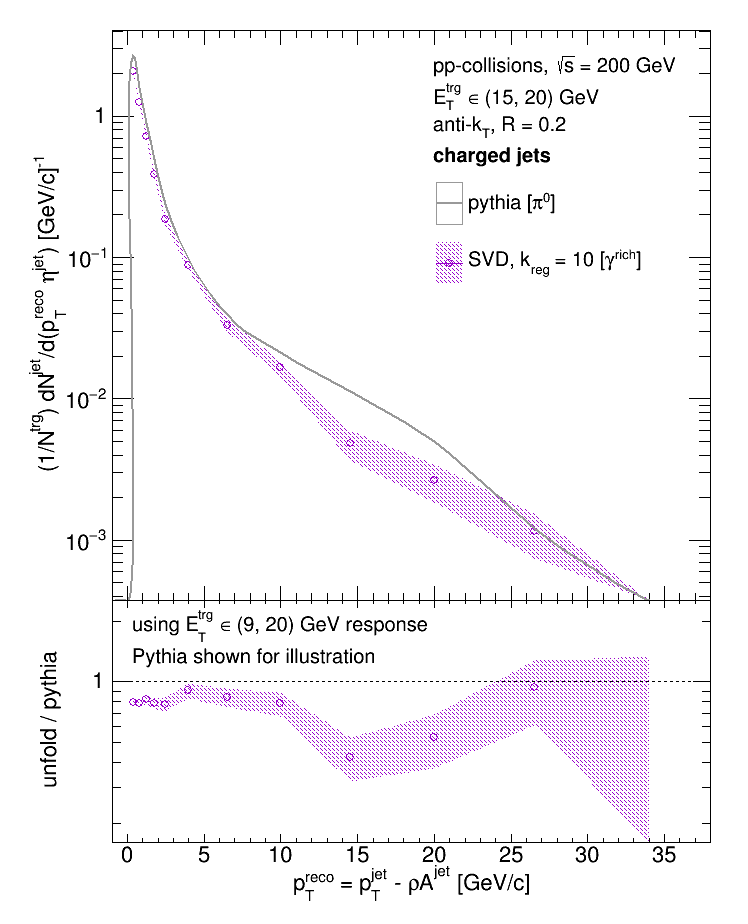
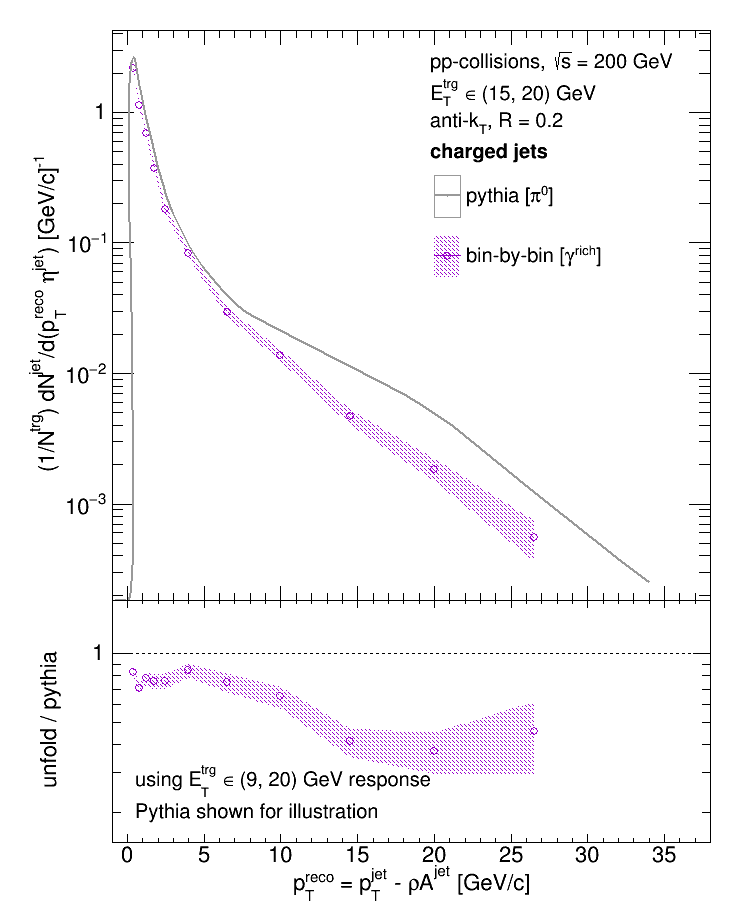
And now there's no bump! The reconstruction efficiency is the dominant correction, so I compared them between the two responses...
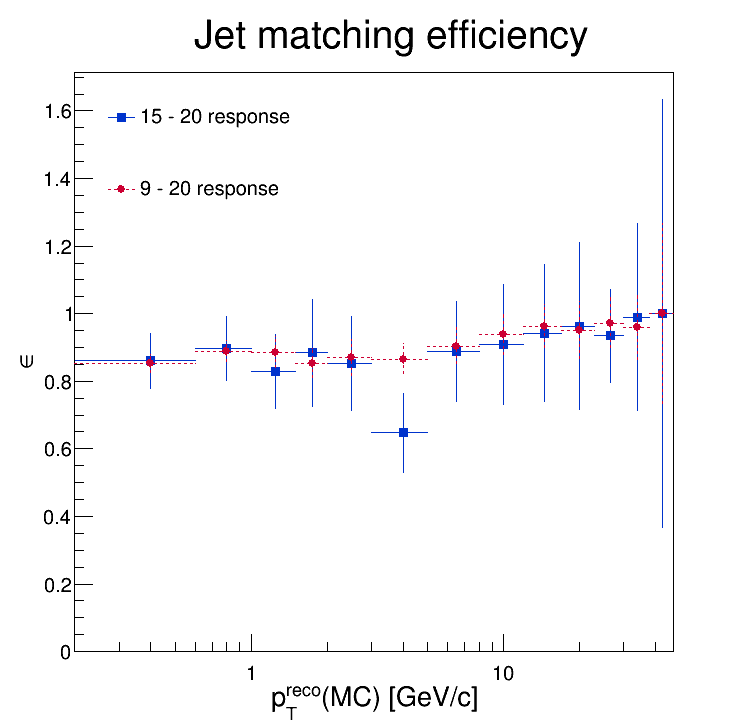
Sure enough, in the 'eTtrg = 15 - 20' GeV efficiency, there's a sizable dip at 'pTreco = 3' GeV/c. Considering the size of the error bars (which are the propagated statistical uncertainties), this is probably just a statistical fluctuation. So when applying these corrections in the future, it would probably be wise to either fit the reconstruction efficiency (and smooth over that bin) or use the 'eTtrg = 9 - 20' GeV response (though this might bias us towards the lower 'eTtrg' priors). Either way, here's all 4 corrected jet distributions on top of each other:

- dmawxc's blog
- Login or register to post comments
